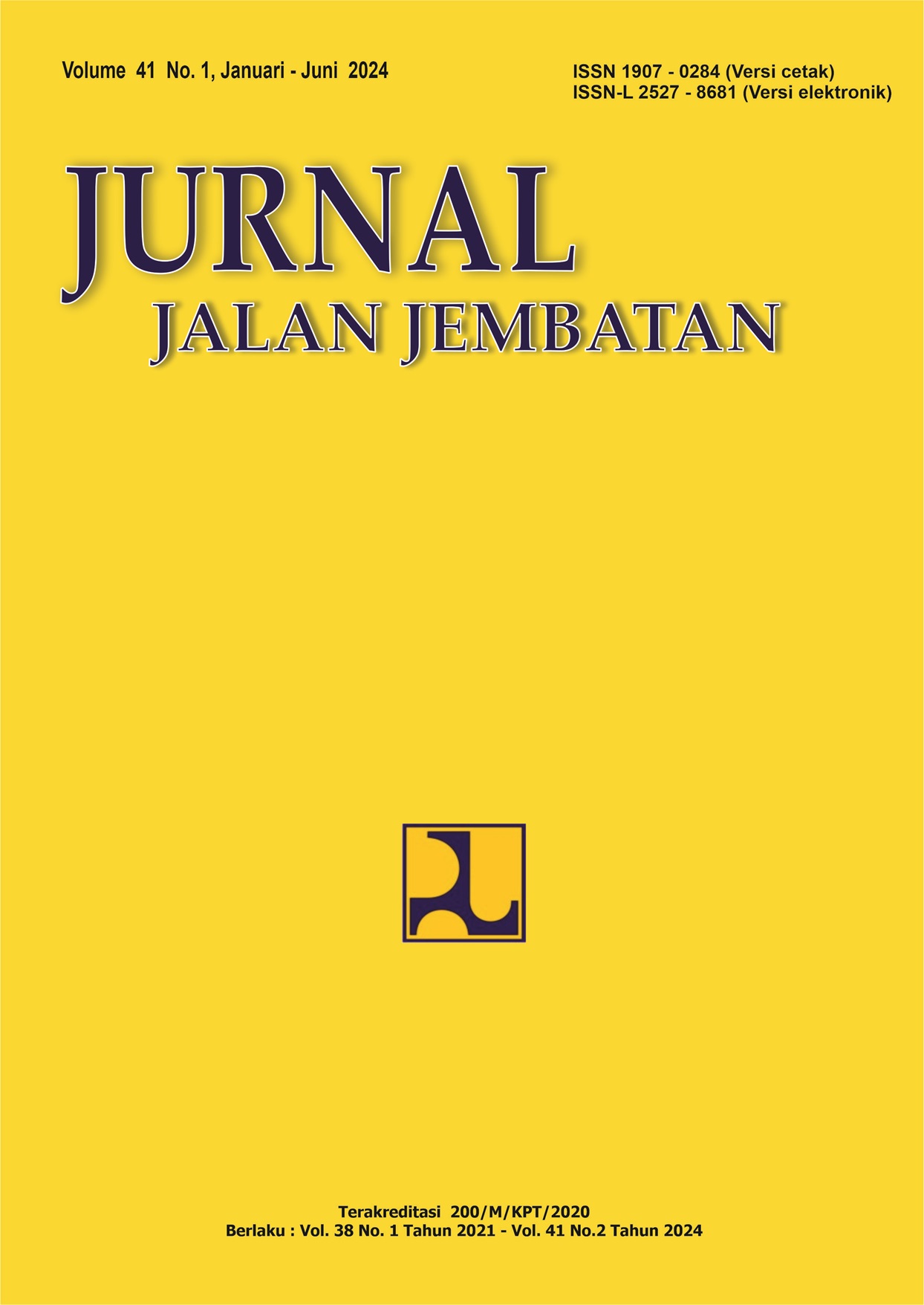THE EFFECT OF RICE HUSK ASH FILLER ON AC-WC MIXTURES AT COASTAL AREAS
Main Article Content
Abstract
Waterlogging can cause damage to paved pavement construction, especially roads in coastal areas that experience seawater inundation by tidal water. Thus, it is necessary to innovate the paved mixture by optimizing natural materials or rice husk ash waste in the asphalt mixture. The purpose of the study was to obtain the stability and fatigue value of the use of rice husk ash filler in the AC-WC mixture in coastal areas. The research method uses experimental methods. The research phase consisted of testing the quality of the material, determining KAO, and soaking with seawater for 24 hours on a filler mixture with rice husk ash using a composition of 6.5%, 7%, and 7.5%, and Marshall testing was carried out. The results showed a decrease in the stability value from typical asphalt of 1856.6 kg to a mixture of rice husk ash of 1346.2 kg. However, there was an increase in the stability value and the percentage of rice husk ash filler. Rice husk ash has a content that can add stability value, increasing flow from 2.02 mm of typical asphalt to 2.7 mm for rice husk ash content of 7%. However, there is a decrease if the percentage of rice husk ash is increased to 7.5%. The higher the percentage of filler with rice husk ash will affect the decrease in flow value. The Marshall Quotient value decreased from the normal asphalt value of 946.17 kg/mm to 543.64 kg/mm and increased by a percentage of 7%-7.5% with a value of 1133.21 kg/mm. The increase in the number of rice husk ash fillers further increases the Marshall Quotient value, but the flow value decreases because the specific gravity of rice husk ash is higher than that of fine aggregate, so that the asphalt covering the aggregate becomes thinner and fatigue decreases. The next step needs to be to conduct a durability test check related to the durability level of the AC-WC Asphalt mixture with rice husk ash. Field-scale applications that can increase the Marshall Quotient value are used a mixture of husk ash filler by 7%-7.5%.
Keywords: AC-WC, filler, Marshall, rice husk ash, sea water
Article Details
Authors who publish in this journal agree to the following terms:
-
Authors retain copyright and grant the journal the right of first publication with the work simultaneously licensed under a Creative Commons Attribution License, which allows others to share the work with acknowledgment of the work's authorship and initial publication in this journal.
-
Authors may enter into additional contractual arrangements for the non-exclusive distribution of the journal's published version of the work (e.g., post it to an institutional repository or publish it in a book), with acknowledgment of its initial publication in this journal.
-
Authors are permitted and encouraged to post their work online (e.g., in institutional repositories or on their website) as it can lead to productive exchanges, as well as earlier and greater citation of the published work.
Each submitted manuscript must be accompanied by a "Manuscript Originality Statement" and a "Copyright Transfer Statement".

